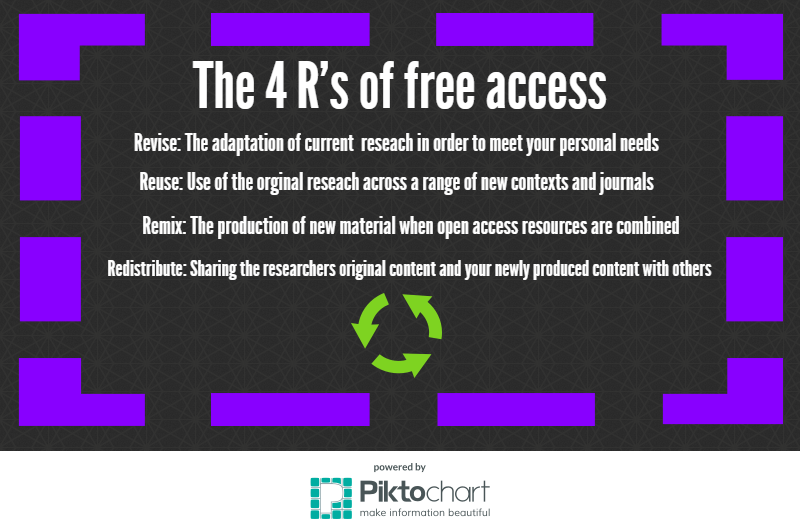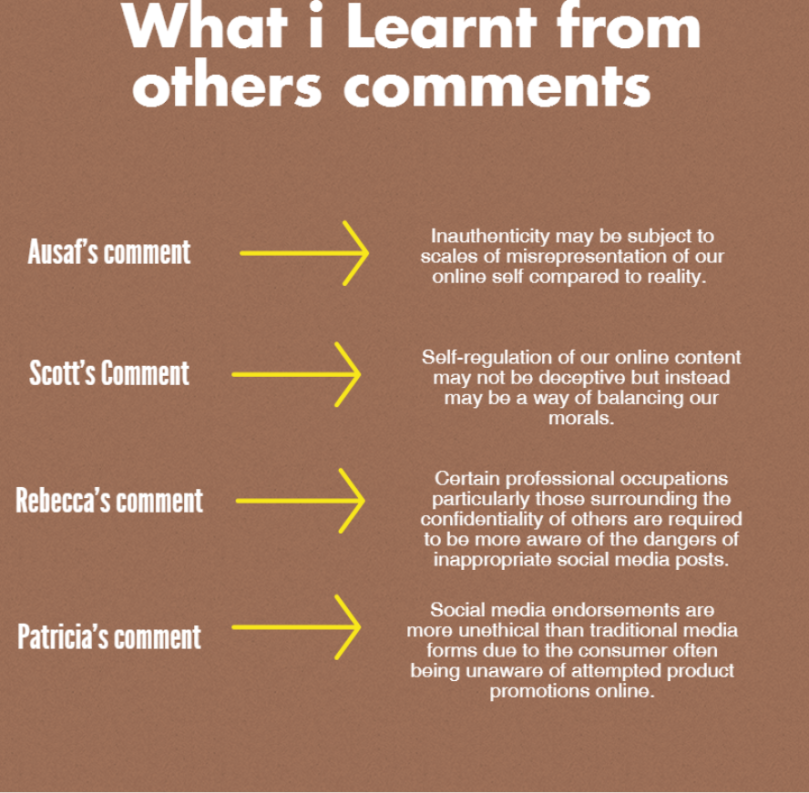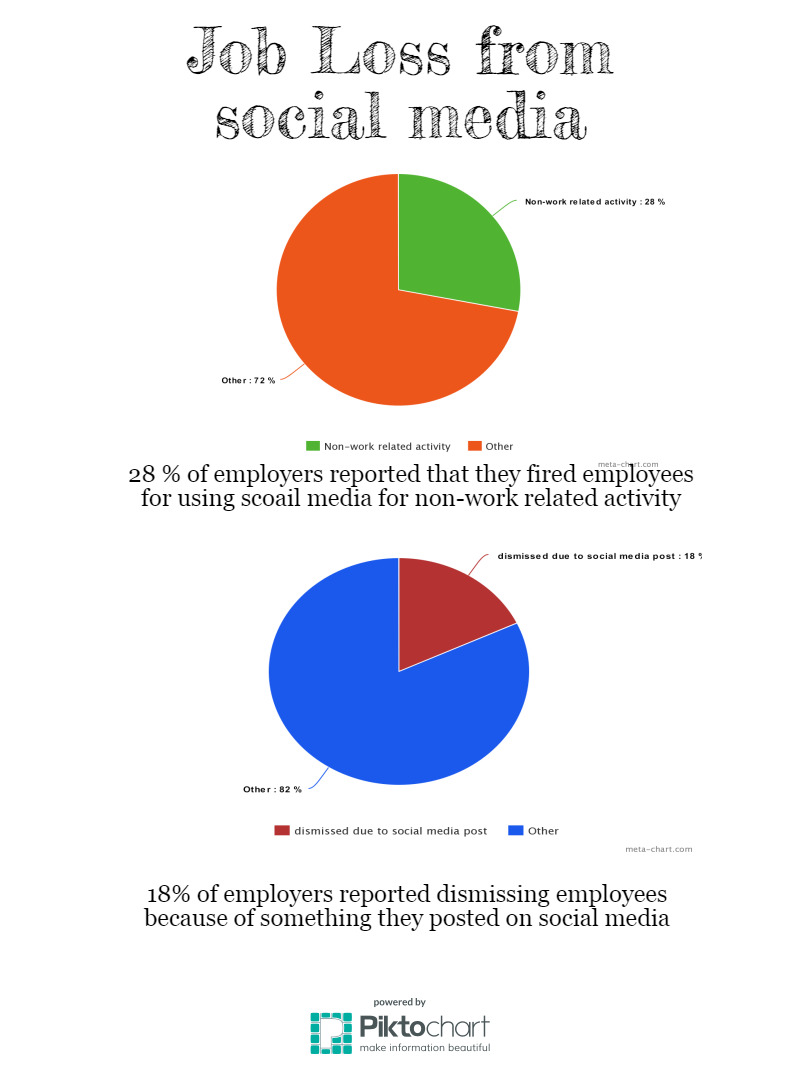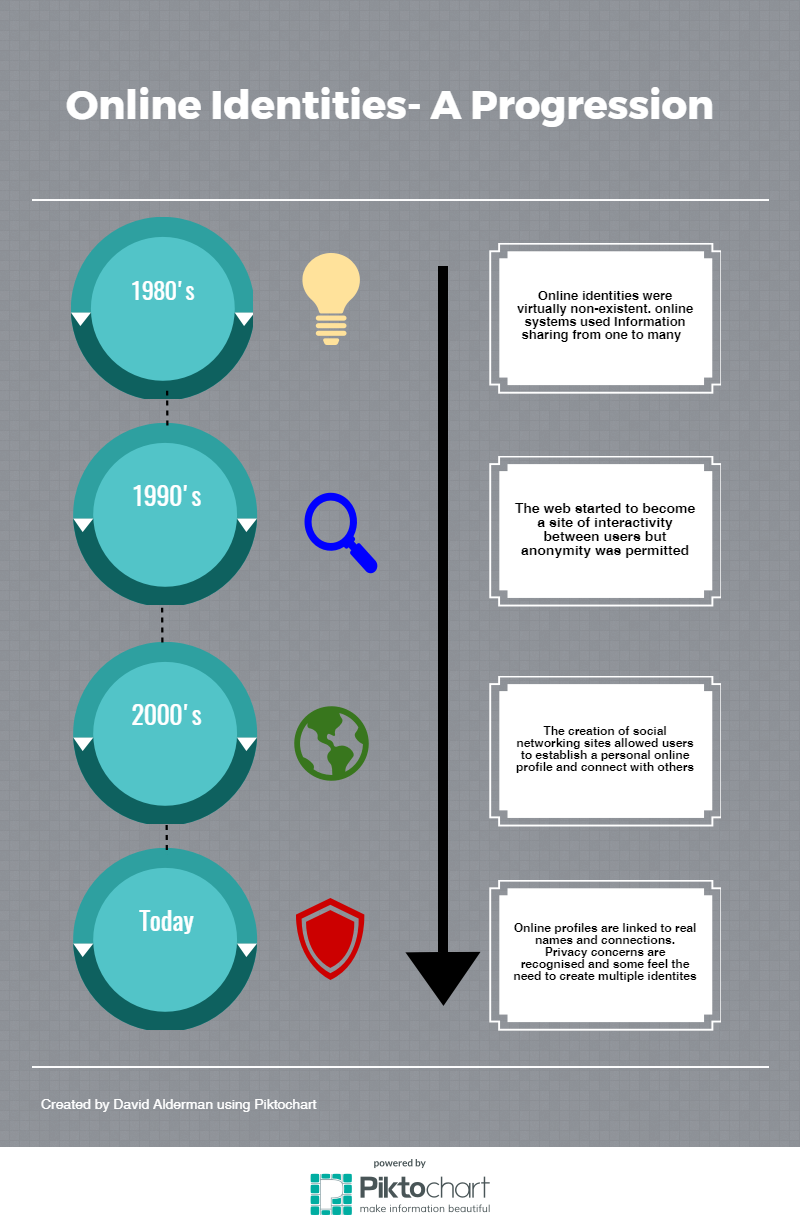Before starting this module, I believed I was fairly proficient with online systems and assumed myself a digital expert, but it didn’t take me long to find out that this simply was not the case. Upon completing my first self-assessment I discovered quickly that my digital literacy was far less advanced than I had expected, particularly in regard to my personal online identity on social media. Considering the same self-assessment now it’s clear to see just have much I’ve grown in my digital aptitude, and I owe it all to UOSM2008!
| Rating at start of module | Comments | Rating at end of module | Comments | |
| Accessing, managing and evaluating online information
|
3 | I feel I am fairly competent at accessing online information, but less skilled at management and evaluation of online material. | 5 | This module has provided me with the opportunity to access and evaluate new online material with each new weekly blog topic. |
| Participating in online communities
|
4 | My online participation is mainly centered around the use of social media sites and online networking platforms. | 5 | I have begun to participate in a greater number of online communities, in particular, the use of LinkedIn has allowed me to connect with professional communities. |
| Building online networks around an area of interest
|
1 | I have very low experience of building online networks around an area of interest as I primarily access user-created content. | 5 | Over the last 5 weeks, my created blog posts were all centred on areas I considered interesting. I can now take this experience and continue to blog around other areas I find thought-provoking. |
| Collaborating with others on shared projects
|
3 | I have mostly formal experience with collaborating with others, through group presentation work usually as a form of assessment. | 5 | While I continue to do group work projects, I have improved my communication experiences with other online users via blog comments. |
| Creating online materials (text, audio, images, video)
|
2 | I have very limited experience of creating online materials, but particularly the creation of images and videos. | 5 | With the use of Piktochart and Powtoons, I am now highly skilled in making text based info-graphics, images and videos |
| Managing your online identity
|
2 | Although I regularly visit different social networking sites, I rarely update information about my online identity. | 5 | I have now established myself as a “digital resident” by preserving an online identity |
| Managing your online privacy and security
|
3 | I try to ensure that my online identity is tightly controlled with high privacy settings. | 5 | As I am now aware of the publicity of my online identity I have placed strict controls on my profiles and created multiple identities to remain private. |
Digital learning
Each week the presentation of a new topic allowed me to research a new field of digital learning, allowing me to both expand my understanding of a particular research area, while also presenting me the opportunity to pick a side for debate based on my reflections and online experiences, and the contrary opinions of my peers. The contributions of these topics has been essential to my online growth. Not only has it improved my communication skills with others, but it has challenged my ability to formulate an argument and reflect on my own considerations in a concise manner. With each passing week an aspect of my digital persona improved such as the creation of a multiple identity following the privacy concerns highlighted in week 2. Another aspect of growth has to be aware of the ways that online content may be misconstrued in a digital format as displayed with the Justine Sacco case, therefore, I have made sure that I am wary of all online content that I post in order to remain ethically safe, as discovered from topic 4.
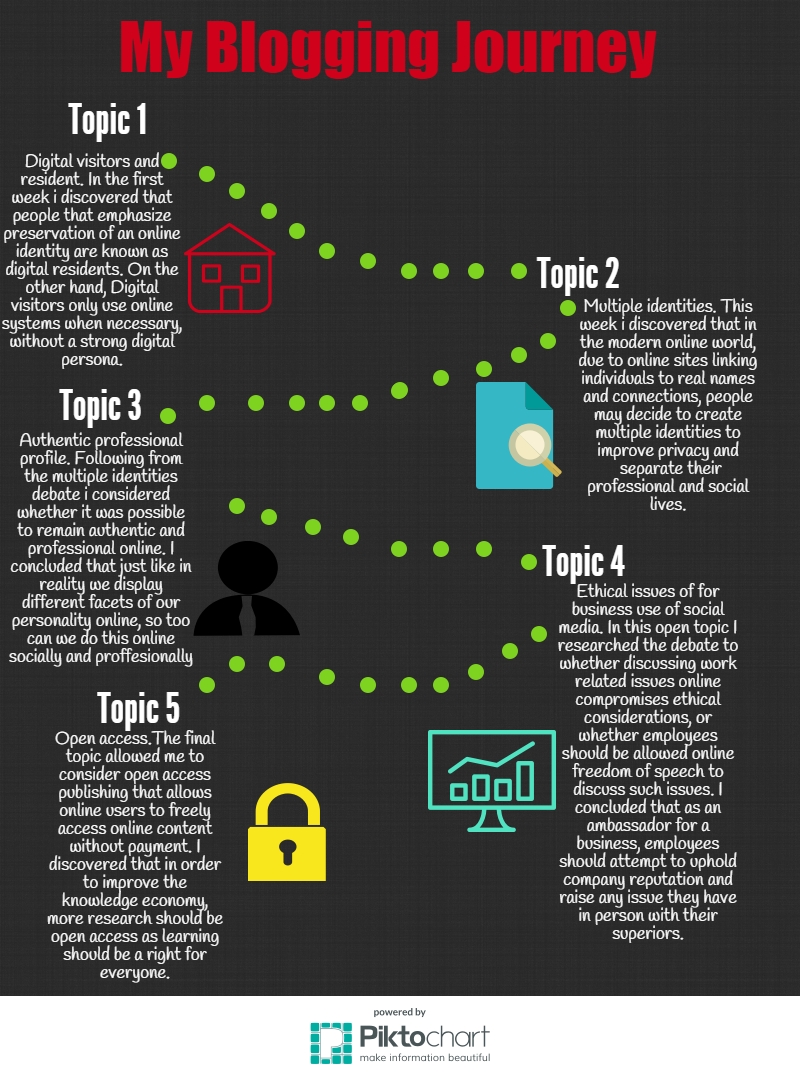
Social media Growth
While improving my digital learning, the module has provided me with the opportunity to improve my social media capabilities and progress my digital identity which I knew was severely deficient. The first way that this was achieved was via the creation of a twitter account. Twitter has allowed to improve my social connections with friends and family, while also providing the opportunity to follow company accounts to advance my professional capabilities. Another way to improve my professional prospects has been via the creation of a LinkedIn account. As I am graduating this year I am faced with the daunting task of looking for a job, however, with a LinkedIn profile I am able to connect with professional communities and display my credentials appropriately, making me desirable to employers. This was a trait I picked up from research of authentic professional profiles of topic 3.

Final Word
This module is certainly unlike anything I’ve taken during my time at university and I’m extremely glad that I did. It has allowed me to explore areas of online interest, consider challenging debates through the comments of my peers, and advance my creative abilities through the regular creation of infographics. Now that I have the tools and experience, I feel I can channel these into personal blogging around an area of interest. The reflections of this final post has taken me on well-ordered journey and looking back all the way to topic 1 (which seems so long ago), I can safely say I have established myself as a “digital resident” as my online identity only continues to improve.
Word count: 543
References:
Ronsom. J (2015) The New York Times magazine, How one stupid tweet blew up Justine Sacco’s life
David Alderman, WordPress week 3 post- WordPress https://davidaldermansite.wordpress.com/category/topic-3/
David Alderman, WordPress week 2 post-https://davidaldermansite.wordpress.com/category/topic-2/
David Alderman, WordPress week 4 post https://davidaldermansite.wordpress.com/category/topic-4/
David Alderman, WordPress week 1https://davidaldermansite.wordpress.com/category/uncategorized/topic-1/
Image references
Figure 2- self made using piktochart
Figure 2- Self made using Piktochart
Video- self made using Powtoons

